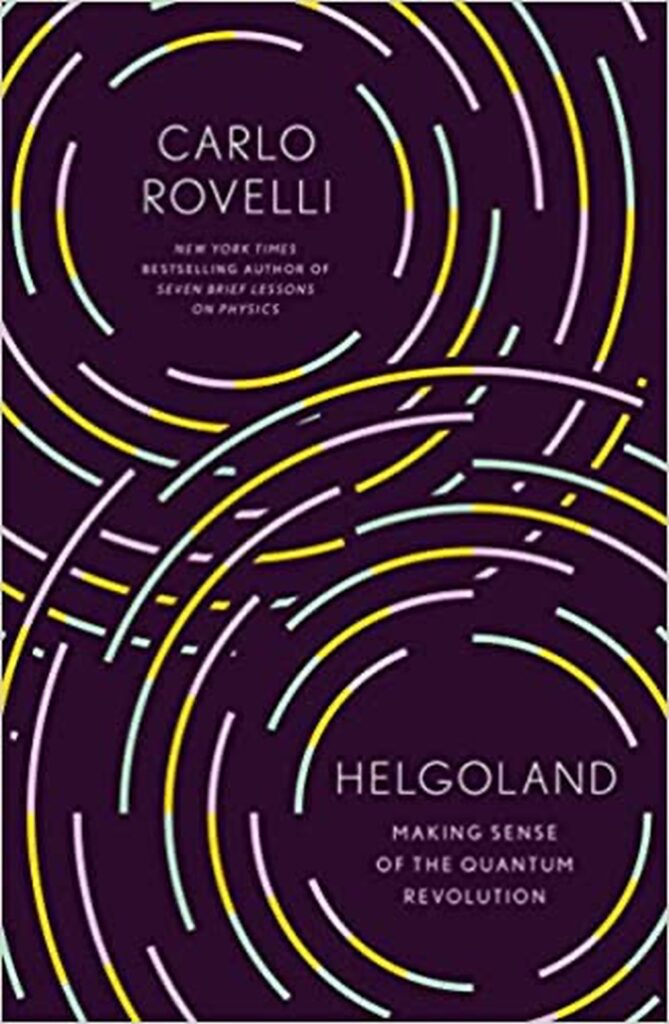Sharing my learnings from the book, Helgoland by Carlo Rovelli
Helgoland by Carlo Rovelli
In Helgoland Carlo Rovelli tells the story of the birth of quantum physics and its bright young founders who were to become some of the most famous Nobel winners in science. It is a celebration of youthful rebellion and intellectual revolution. An invitation to a magical place.
Here Rovelli illuminates competing interpretations of this science and offers his own original view, describing the world we touch as a fabric woven by relations. Where we, as every other thing around us, exist in our interactions with one another, in a never-ending game of mirrors.

- It’s the summer of 1925, allergy season, and Werner Heisenberg can’t stop sneezing. To alleviate his hay fever, the 23-year old physicist escapes to Helgoland, a small rocky island in the North Sea. Here, finally able to breathe freely, he begins to think deeply about atoms. His insights will revolutionize physics and our understanding of reality.
- Niels Bohr, a Danish physicist, has recently identified an odd phenomenon. He’s observed that, when heated, atoms emit light in certain specific frequencies. The question on Heisenberg’s mind is why? Why should electrons stay confined to certain orbits? Essentially, he wants to understand the mechanics of quantum leaps.
- Heisenberg focused on what was actually observable, that is, the frequency and amplitude of light emitted during these leaps. He reworked the classical physical laws and replaced each separate variable with a table or matrix representing all the possible changes which could occur. The math was extremely complicated, but the outcome perfectly matched what Bohr had observed.
- Erwin Schrödinger, another physicist, took a different approach. He considered electrons not as simple particles that orbited a nucleus, but as electromagnetic waves that propagated around it. Using the simpler math of wave equations, he was also able to accurately match Bohr’s observations. But, there was a snag. Waves are diffuse, but when observed by a detector, electrons are clearly distinct points, or particles.
- A third thinker, Max Born, argued that while Heisenberg’s matrix calculations explained the outcomes of observing electrons, Schrödinger’s wave calculations provided the probability of making those observations. It seemed that in this new quantum physics, electrons somehow existed as waves until seen by an outside observer. Then, they collapse into a point.
- a quantum superposition occurs when two contradictory properties are, in a sense, both present. It’s a notoriously difficult concept to wrap your head around.
- This thought experiment, known as Schrödinger’s cat, illustrates a central mystery of quantum physics. While superpositions seem improbable, scientists have demonstrated that they actually occur.
- One interpretation is the many worlds theory. In this model, the idea of the cat being both asleep and awake is taken literally. That is, since the probability of the trigger occurring is one in two, both occur, just in different timelines. You, as the observer, also exist in each of these timelines. In fact, because there’s an infinite number of quantum events, there’s actually an infinite number of timelines or worlds.
- A competing interpretation, the hidden variables theory, avoids infinite worlds by separating Schrödinger’s wave from the quantum particle itself. In this idea, the probability predicted by Schrödinger exists in a real way we don’t yet understand, even as the observable physical reality only takes one form. So, the probable asleep cat exists in our world, even if we only see an awake one.
- a third interpretation, called quantum Bayesianism or QBism, is wholly different. According to this theory, superpositions and Schrödinger’s probabilities are just information, and incomplete information at that. When observers open the box and see the cat, they get more information. In this way, the observer makes reality through observation piece by piece.
- The relational interpretation presents a world where everything is in flux.
- The relational model demystifies the process of quantum entanglement.
- Philosophy and science are deeply intertwined with one another.
- the inherent strangeness of quantum physics has a way of sparking the imagination. applying the concepts of relational quantum theory to a question like the nature of consciousness can open new paths for investigation and inquiry.
- philosophy offers three main models for the human mind.
- dualism, where the mind exists as a separate, almost spiritual, entity from the body and nature
- idealism, where the mind encompasses and accounts for all of reality
- materialism, where mental phenomena are just the outcome of brute physical processes
- Studying quantum physics can help us see the world in new ways.


Leave a Reply